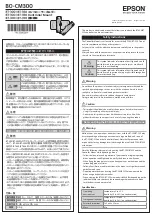
32
14. Controlling the quadcopter with your smartphone
The quadcopter can also be operated solely with a smartphone as well as the transmitter included. There are two
options for this shown below.
To ensure an interference-free transmission of control and video signals, there should not be other trans-
mitters in the model’s 2.4 GHz transmission range. The smartphone's "Bluetooth
®
" function must be disa-
bled.
The model’s reaction to control commands from the smartphone is a bit slower and (since it is unfamiliar)
not as accurate as operation with the transmitter. So please ensure that the flight area is free of obstacles.
Be patient when controlling the model using a smartphone.
After a crash or during the first flight, the sensors and the compass must also be calibrated before take-off
when operating the model with a smartphone. Please observe the instructions in chapter 15 "Other func-
tions of the app".
Controlling the quadcopter with the app icons
After starting the app, various controls are shown on the smartphone screen in addition to the camera feed (see
Figure 16).
In addition to the already known camera controls (see Figure 16, nos. 21 – 23), the remote control transmitter controls
will also be displayed after selecting the icon in Figure 19, no. 16.
The left-hand control (Figure 19, no. A) is used in the same way as the remote control transmitter to control both the
flight altitude and rotation of the model about its own vertical axis (Yaw).
The right-hand control (Figure 19, no. B) is used in the same way as the hand-held transmitter to control pitch (forward/
backward) and roll (sideways to the left/right). Steering forward with this element corresponds to pitching forward and
has the same function as the hand-held transmitter. Pulling the element backwards is analogous to the hand-held
transmitter. The model will float backwards. Moving the control to the left or right is also analogous to the hand-held
transmitter. The model will float to the left or right.
Figure 19






































